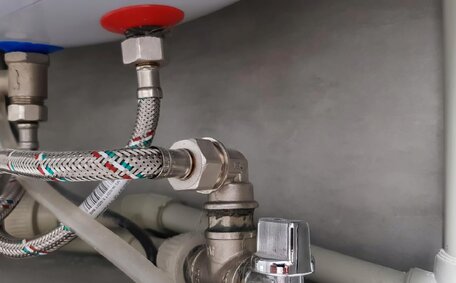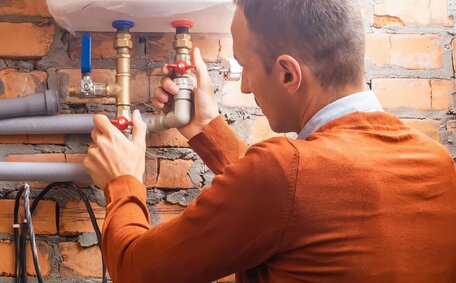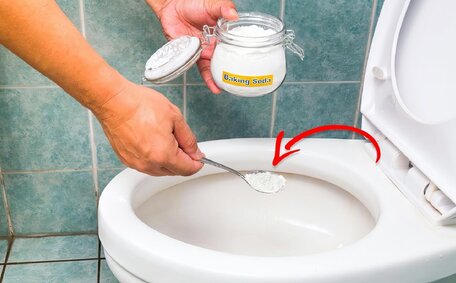What is Pipe Relining?
Pipe relining is a cutting-edge technology that offers a non-invasive solution to repair damaged pipelines without the need for traditional excavation. By inserting a flexible liner impregnated with epoxy resin into the existing pipeline, it creates a new, reinforced structure within the old pipe.
The relining process begins with a technician using a camera to inspect the pipe’s interior, identifying issues suitable for relining, such as damage or wear. Once assessed, the process includes introducing a felt liner soaked in epoxy through an access point; this liner forms the new internal structure within the current pipe. During the relining process, the liner bonds to the pipe’s inner walls, effectively sealing cracks and holes, thereby resolving plumbing issues and reinforcing the pipe structure.
Once set, the epoxy resin forms a smooth, continuous, and robust lining within the old one, diminishing the disruption your system may have faced, particularly when repairing damaged pipes, and boosting its overall well-being.
Pipe relining excels as it does not damage lawns with excavation for blocked or damaged pipes, keeping your yard intact and sparing you from the trouble of upheaval. This method is efficient and can often be completed within a day, avoiding the mess and high costs associated with traditional pipe replacement.
Employing refined relining techniques, this professional pipe relining approach known as trenchless pipe relining provides an efficient and monetary sound solution, adeptly refurbishing your pipes to prevent further harm from root intrusions, deterioration, splits, blockages, and the like. The new pipe is designed to effectively guard against invasions by tree root intrusions, a frequent cause of blocked pipes, providing a life expectancy of 50 years and backed by substantial warranty terms, making it a wise decision for expert plumbing repairs and upkeep.
How Pipe Relining Works
This guide provides a comprehensive look at pipe relining and its role in revitalising your plumbing system.
- Initial Inspection - Initially, a plumber will conduct a thorough inspection of the damaged or blocked pipes using a drain camera. This allows them to identify blocked drains and determine the condition of the pipe.
- Cleaning - The pipes can be cleaned using high-pressure water jets to remove any debris, grime or obstructions.
- Resin Liner Insertion - A flexible liner coated with epoxy is drenched in resin, then guided in through an access point and maneuvered along the pipe.
- Curing - The resin-saturated liner is inflated, whereby relining can used to press it firmly against the existing pipe walls. It is then cured using hot water, steam or UV light which activates the resin, causing it to harden.
- Cool Down - Once cured, the liner is cooled to solidify the resin and strengthen the repaired pipe. Cool water is flushed through to bring the temperature back down.
- Final Testing - The plumber manoeuvres a camera through the relined pipe to ensure the lining has set evenly and taken care of all your plumbing concerns with a steady seal on leaks or damages.
Pipe relining is suitable for pipes with diameters ranging from 40mm to 225mm, and the process is usually completed within a day without the need for excavation or causing significant disruption.
Benefits of Pipe Relining
Pipe relining has proven to have significant advantages over traditional pipe replacement, particularly when it comes to meeting your plumbing needs:
- Less invasive – Effectively removes any need for disturbance, preserving your property’s condition with sophisticated pipe relining techniques.
- Faster repairs – Repairs are often completed within a day, minimising disruption to daily life.
- Cost savings – Pipe relining tends to be more affordable than traditional pipe replacement, providing substantial cost savings.
- Longevity – Epoxy liners, if adeptly fixed in place, afford your pipeline system a robust expectancy 50 years or more, fostering lasting durability.
- Strength – Relined pipes are structurally as strong as brand new pipes.
- Root resistance – Smooth epoxy lining is key in drain relining, preventing future root intrusion and blockages.
- Flow restoration – Relining restores flow by smoothing out corrosion damage and blockages.
- Versatility – Equally effective for sewer relining, addressing sewer storm water systems and lines, as well as gas and drinkable water pipes, catering to a broad array of diameters from 40mm to 300mm.
- Environmentally friendly – It has a much lower environmental impact compared to excavating your garden for pipe replacement.
- Warranties – Substantial year guarantee periods of up to 10 years back the work.
In conclusion, understanding pipe relining as compared to traditional replacement techniques steers you towards a cost-effective and non-disruptive method of renovating damaged plumbing. It offers long-term functionality to your existing pipes without the usual disruption and expenses incurred over time.
Minimal Excavation and Property Disruption
This access point may be as small as 300mm x 300mm if accessing the pipe externally, or accessed via an internal gully trap or toilet. Pipe relining requires just a single, small access point to insert the epoxy resin liner into the damaged pipe.
As the procedure is executed with precision, there is little to no disruption to your daily activities.
For a standard pipe relining task, the only digging needed is to expose the access point; the rest of the pipe network under your home remains untouched. This causes far less disruption to pathways, garden beds, lawns, trees and outdoor structures compared to digging long trenches to access broken pipes.
The minimal disturbance that pipe relining causes is a significant advantage we provide, demonstrating our leadership in the Northern Sydney region’s relining industry. There is No need to disrupt your sewer pipe network running under buildings, footpaths or busy roads. The integrity of your property’s existing infrastructure and landscape remains intact.
Notably, Sydney pipe relining avoids the collateral damage from soil disruption frequently associated with conventional methods. With pipe relining, there is no risk of disrupting surrounding utilities, weakening foundations, or damaging nearby structures. This offers substantial convenience for homeowners and contributes to the sustainability of urban environments.
Preserves Landscaping and Aesthetics
A key benefit of pipe relining is its ability to preserve the existing landscaping and aesthetics of your property. Since no digging or trenching is required, your lawns, garden beds, pathways, trees and outdoor structures remain fully intact.
You avoid the potential harm that extensive excavation can inflict on your dwelling, such as the need to remove swathes of lawn, garden beds, or even garden walls to reach broken sewer pipes. Native frangipanis, banksias, grevilleas and other flowering species typical in North Shore gardens remain preserved and tranquil.
With pipe relining, there is no need to dig up pipes running under garden beds, pathways or landscaped areas. Your property’s infrastructure and visual appeal remain undisturbed, eliminating the eyesore of trenches. This maintains the natural ambience that a well-designed garden provides.
The mess, costs and the potential to harm your surrounding areas from digging up pipes is entirely prevented. The compact access point required for pipe relining is quickly cleaned and restored by your plumber after the job, leaving your outdoor areas pristine.
Pipe relining enables pipe repairs to be carried out without excavation, thus preserving both the integrity and aesthetics of your property.
Considerations for Pipe Relining
- Extent of Damage - The current plumbing pipe requires assessment to ascertain the level of damage and its suitability to accommodate the liner. Severely corroded or collapsed pipes may need full replacement, which is when does pipe relining become a suitable alternative.
- Pipe Material - Pipe relining is typically suitable for cast iron, PVC, concrete, and clay pipes. It’s not suitable for asbestos cement pipes but perfect for pipe lining applications on other materials.
- Pipe Diameter - Suitable for pipes with diameters from 40mm to 300mm; pipes outside this range may not be the best candidates for relining.
- Pipe layout - Simple linear pipes are ideal. Relining highly angled, multi-junction or convoluted layouts can be more challenging.
- Access - Entry points for the pipe work to insert the liner must be available, like a gully trap or vent stack.
Your qualified plumber can assess your circumstances with a drain camera to verify if it’s appropriate to reline your pipes. They will check the pipe condition, diameter, material and layout. This appraisal will ascertain whether relining can satisfy your plumbing needs by rejuvenating and prolonging your piping’s service life, circumventing the clutter and expenses of excavation.
A well-designed plumbing system in adequate condition may find the best pipe relining to be an excellent method, offering trenchless drain repair in a non-invasive manner. Contact our team today to learn more about whether it’s the right choice for your property’s drain repairs.
- Check pipe materials - Relining is more effective for cast iron, PVC, concrete and clay pipes. Asbestos cement pipes are usually not suitable.
- Assess pipe condition - Pipes must be structurally sound enough to hold the liner. Severely corroded or collapsed pipes will likely need replacing.
- Consider pipe diameter - Relining is effective for pipes ranging from 40mm to 300mm in diameter. Smaller or larger pipes may not be options.
- Check for major blockages - Sections of pipe that are fully blocked or collapsed can use advanced techniques for their replacement or relining.
A trustworthy approach to determine if relining can be used on your pipes as suitable candidates for trenchless refurbishments is to arrange for an exhaustive inspection by a certified plumber. Our adept team at North Epping Plumbing excels in this method of pipe repair, starting with thorough drain camera inspections for a precise system evaluation.
Following an assessment of pipe materials, condition, diameter, and arrangement, we’ll determine if the relining process is a feasible action to carry out, favouring it over pipeline replacement for your estate’s conduits. Contact us today to schedule an inspection.
Cost Comparison to Pipe Replacement
Determining if pipe relining is worth the investment is crucial; it frequently delivers substantial savings, lowering costs linked with full pipe replacement. The cost of pipe relining reduces expenses such as jackhammering, excavation, and garden restoration, while offering a life expectancy of 50 years for your pipes. It also lessens the potential disturbance that excavation work can cause.
Regarding the cost of pipe relining, anticipate a price range from $80 to $250 per linear metre, whilst traditional pipe replacement may cost between $400 to $1000+ per metre. The durability of a relined pipe parallels that of new installations, presenting an admirable life expectancy of 50 years or more. Such durability leads to significant saving of both time and money, ordinarily spent on upkeep and renewal tasks for ageing pipes. When a suitable option, pipe relining provides a cost-effective solution for restoring your plumbing system.
Preparing Your Property for Pipe Relining
A seamless relining process commences with essential property preparation as guided by our proficient team, adept at fulfilling plumbing needs effectively. Ensure a 1-metre clearance around all external access zones, allowing your plumber to address all your plumbing requirements. Clearing any obstructive vegetation, items or structures is crucial to ensure that all your plumbing needs are addressed unimpeded. With relining more common now, for internal access like gully traps, ensure the area is clear of all your personal items and furnishings. To guarantee a seamless relining process, it is advisable to prepare your property modestly.
Ask them to inspect the pipes with a drain camera before relining to identify any severely damaged sections needing replacement. With minor preparation, your property will be ready for your plumber to efficiently complete the minimally invasive relining work. Ask them to inspect the pipes with a drain camera before relining to identify any severely damaged sections needing replacement.
What to Expect During and After the Process
During the pipe relining procedure, have confidence that your plumbing expert is fully prepared to expediently fix your distinctive plumbing issues, upholding the tranquillity of your routine. The plumbing technicians, who are always thorough, will arrive, inspect the pipes and prepare the liner. Access points may need to be uncovered but no significant digging or jackhammering takes place.
The liner, filled with versatile resin, will be conscientiously carried out through the affected areas, securing a precise bonding with the internal surfaces. Curing with hot water or steam takes 1-3 hours, during which time the pipe cannot be used.
The technicians monitor the curing, temperature and pressures. Once cooled, the pipe is ready for service again.
We persistently advocate for a definitive camera analysis to validate accurate adherence of the liner, thereby authenticating the wholeness of your relined pipe resolving blocked damaged pipes. The access point is then sealed, leaving no trace of the repair work on blocked damaged pipes. The only excavation needed, which is typically minor, secures the integrity of your system from blocked damaged pipes and will be repaired to blend seamlessly with the surroundings.
After relining, homeowners can expect improved water flow, elimination of leaks, and prevention of future tree root intrusions. The epoxy liner mends harm and smoothens the inner pipe surface, presenting a dependable solution that is often more desirable than traditional pipe strategies. With regular upkeep, the enhanced pipe rivals new ones in longevity, negating replacement.
In summary, opting for our pipe relining services guarantees a meticulously executed process, often accomplished in just one day, presenting a longer-lasting solution than traditional methods for your sewer lines. It provides a relining service that prolongs the life of your pipes with less property disruption. Our comprehensive pipe relining services manage the entire process, upholding your yard’s integrity and elevating your plumbing to optimal performance.
How to Choose a Qualified Plumber
Choosing specialists in pipe relining Sydney services means selecting a provider renowned for a proficient, experienced, and esteemed relining service. These are some pointers for selecting a specialist relining service well-matched to our team in Sydney:
- Ensure the business is licenced and all plumbers are fully certified for drain work.
- Look for a company with comprehensive experience in relining services, noted for employing advanced trenchless techniques and epoxy resin systems.
- Choose a provider who has been enriching your local area with expertise in drain relining for many years and understands the region’s plumbing requirements.
- Ask if they offer drain camera inspections to thoroughly assess your pipes before relining.
- Request to see examples of their previous relining work and check reviews.
- Make sure they provide long guarantee periods on parts and labour.
- Choose a plumber who outlines the entire process and provides you with options to suit your property.
Our experienced team at North Epping Plumbing delivers a full suite of services, ensuring all aspects of your plumbing needs are meticulously catered to. With over a quarter-century dedicated to serving the local community, we are specialists in trenchless drain repair, masterfully equipped to carry out the critical tasks. Engage with us at 1300 349 338 or via [email protected] to discover the broad scope of solutions we offer and to arrange an on-site consultation.






